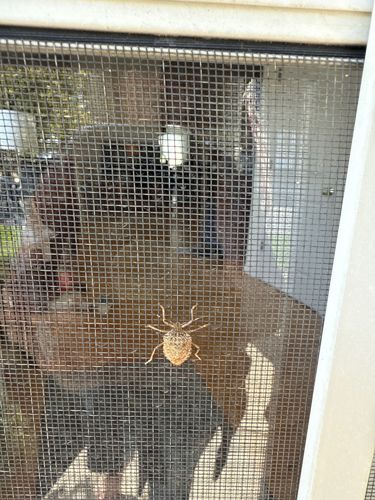Brown Marmorated Stink Bug
Scientific Name: Halyomorpha halys
Order & Family: Hemiptera (True Bugs), Pentatomidae (Stink Bugs)
Size: Adults are typically 1.2 to 1.7 cm (0.47 to 0.67 inches) long.

Natural Habitat
Originally from East Asia (China, Japan, Korea, Taiwan), it has become an invasive species in North America and Europe. It lives in agricultural areas, orchards, gardens, and can frequently be found on and in human dwellings, especially during cooler months when seeking shelter.
Diet & Feeding
It is polyphagous, meaning it feeds on a wide variety of plants. It uses its piercing-sucking mouthparts to feed on fruits, vegetables, and field crops. Some common hosts include apples, peaches, corn, soybeans, tomatoes, and peppers.
Behavior Patterns
Adults are known for overwintering indoors in large aggregations, seeking shelter in homes and other structures when temperatures drop. When disturbed or crushed, they emit a strong, unpleasant odor, which is how they get their common name. They are strong fliers and can travel considerable distances. Females lay clusters of eggs on the underside of leaves.
Risks & Benefits
Risks: It is a significant agricultural pest, causing considerable damage to a wide range of crops, leading to economic losses for farmers. Its presence indoors as an overwintering pest can be a nuisance for homeowners. It is not known to bite humans or transmit diseases. Benefits: There are no known direct benefits of the Brown Marmorated Stink Bug to humans or the ecosystem in regions where it is invasive; rather, it is considered a pest.
Identified on: 9/18/2025